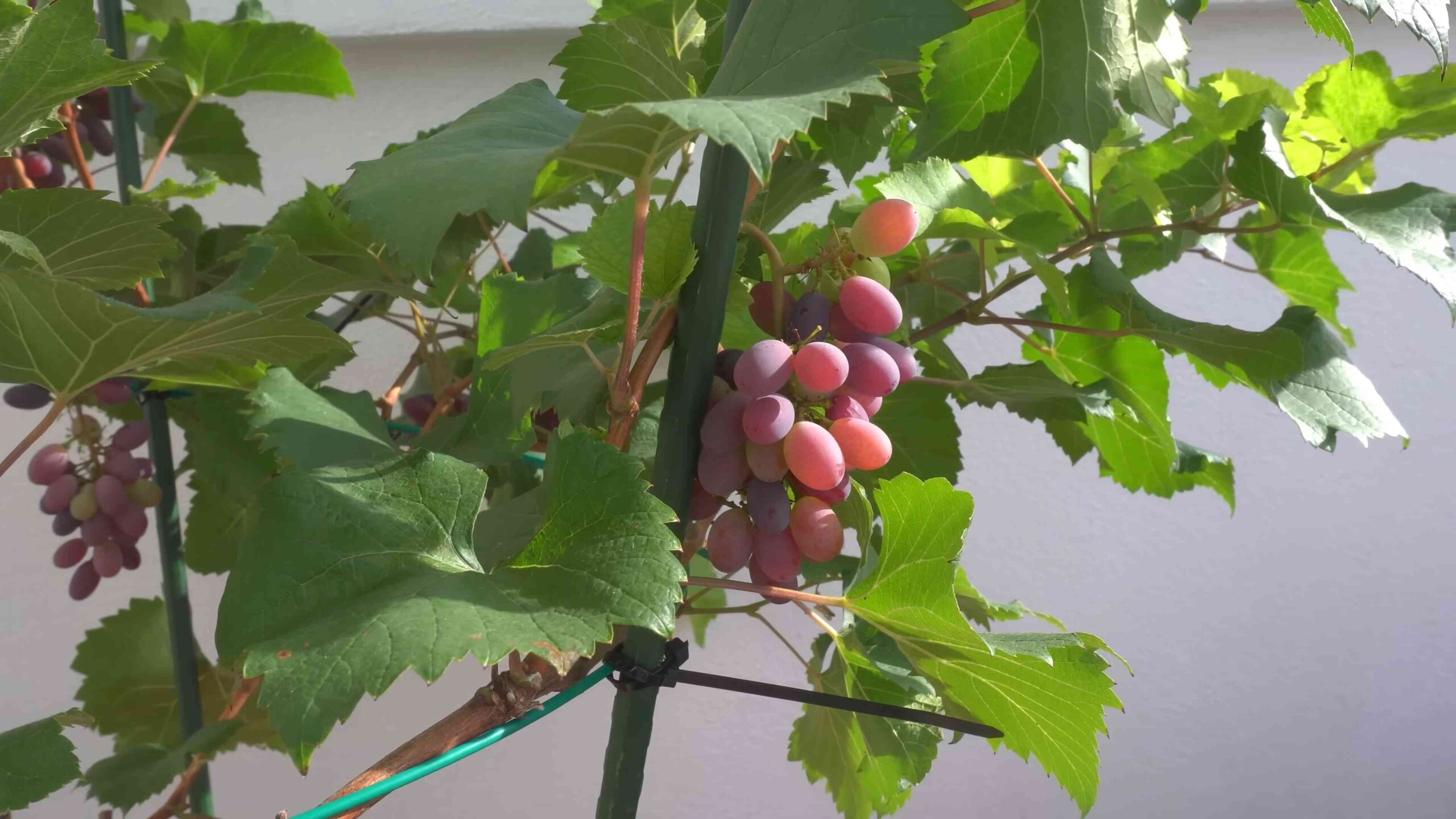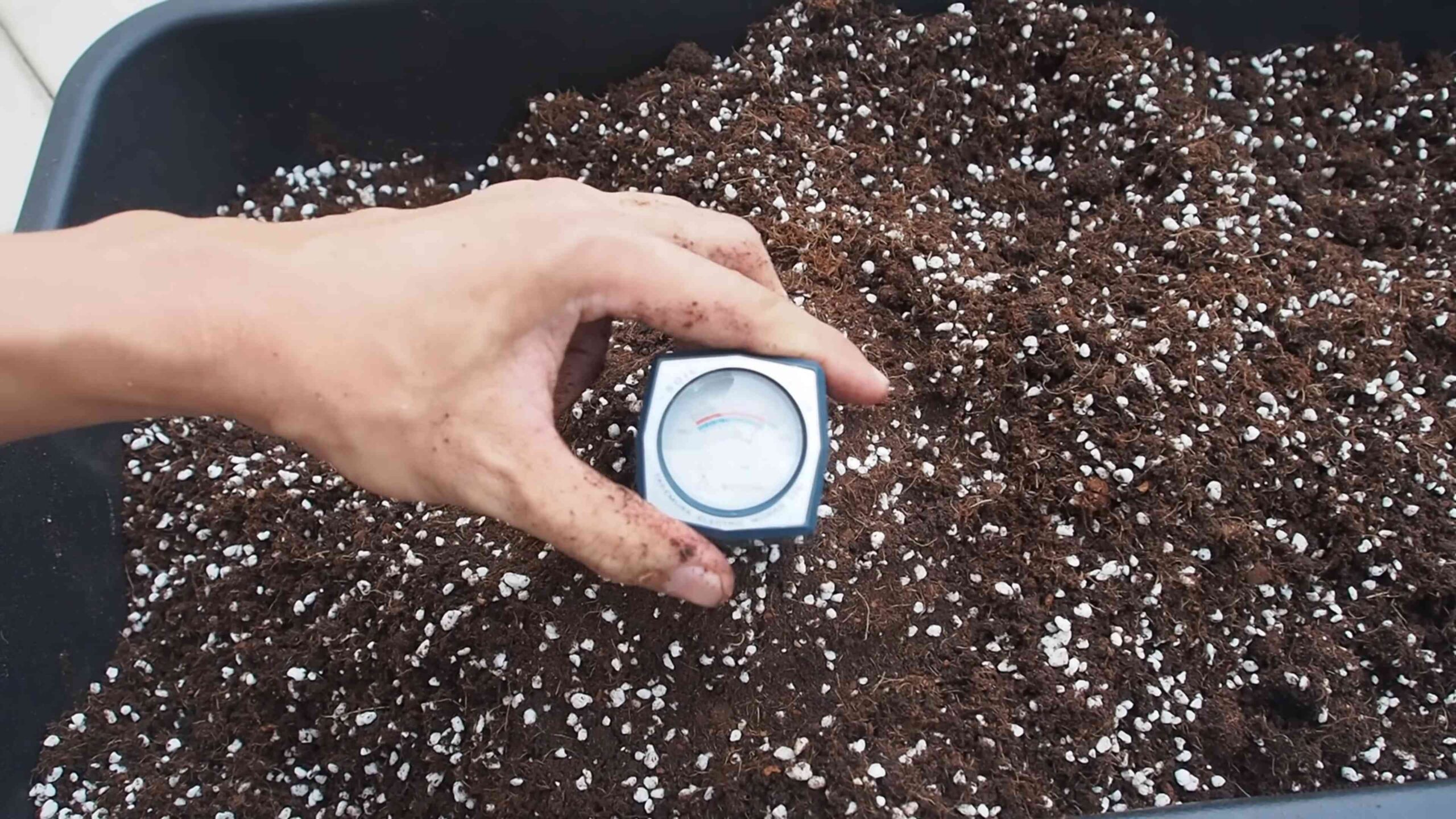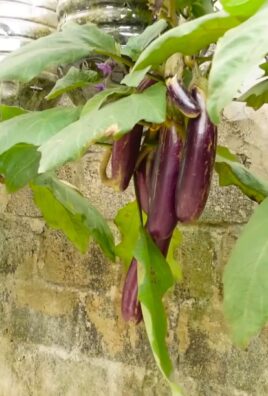Growing grapes in containers might seem like a challenge reserved for seasoned vineyard owners, but I’m here to tell you it’s totally achievable, even if you only have a small balcony or patio! Forget sprawling vineyards; we’re bringing the taste of Tuscany (or Napa Valley, or wherever your grape-loving heart desires!) right to your doorstep.
For centuries, grapes have been revered, not just for their delicious fruit and the wine they produce, but also as symbols of abundance and prosperity. From ancient Roman banquets to modern-day celebrations, grapes have held a special place in our cultures. But you don’t need a sprawling estate to partake in this rich history.
Let’s face it, not everyone has the space or the ideal soil conditions for a traditional vineyard. That’s where the magic of container gardening comes in! Growing grapes in containers allows you to control the environment, choose the perfect variety for your climate, and enjoy the satisfaction of harvesting your own homegrown grapes, no matter how limited your space may be. Plus, who wouldn’t want to impress their friends with a thriving grapevine on their patio? This DIY guide will walk you through every step, from selecting the right container and grape variety to pruning techniques and pest control. Get ready to unleash your inner gardener and enjoy the sweet rewards of your labor!

Growing Grapes in Containers: A Bountiful Harvest on Your Patio!
Hey there, fellow gardening enthusiasts! Ever dreamed of plucking juicy grapes straight from your own backyard? Well, guess what? You don’t need acres of land to make that dream a reality. Growing grapes in containers is totally doable, and I’m here to guide you through every step of the process. It’s easier than you think, and the reward of homegrown grapes is absolutely worth it. Let’s get started!
Choosing the Right Grape Variety
First things first, not all grape varieties are created equal when it comes to container gardening. You’ll want to pick a variety that’s well-suited for smaller spaces and container life. Here’s what to consider:
* Size and Vigor: Opt for compact or dwarf varieties. These won’t outgrow their container as quickly and are easier to manage.
* Disease Resistance: Look for varieties known for their resistance to common grape diseases like powdery mildew and black rot. This will save you a lot of headaches down the road.
* Climate Compatibility: Choose a variety that thrives in your local climate. This is crucial for successful grape growing. Check your USDA plant hardiness zone to make sure the variety you choose is a good fit.
* Table Grapes vs. Wine Grapes: Decide whether you want to eat your grapes fresh (table grapes) or use them for winemaking (wine grapes). Table grapes tend to be sweeter and have thinner skins.
Some excellent container-friendly grape varieties include:
* ‘Himrod’ (Seedless table grape, good disease resistance)
* ‘Reliance’ (Seedless table grape, very cold hardy)
* ‘Vanessa’ (Seedless table grape, red)
* ‘Thompson Seedless’ (Classic table grape, may need more care)
* ‘Pinot Meunier’ (Wine grape, used in Champagne)
* ‘Zinfandel’ (Wine grape, popular red wine)
Selecting the Perfect Container
The right container is essential for your grape vine’s health and growth. Here’s what to look for:
* Size Matters: Choose a large container, at least 15-20 gallons in size. Grape vines have extensive root systems, and they need plenty of room to grow. A half-barrel planter or a large, sturdy pot works well.
* Drainage is Key: Make sure your container has excellent drainage holes. Grapes hate sitting in soggy soil, which can lead to root rot.
* Material: Plastic, terracotta, or wood containers are all suitable. Plastic is lightweight and retains moisture well, while terracotta is porous and allows for better aeration. Wood provides a natural look and good insulation.
* Stability: A mature grape vine can become quite heavy, especially when laden with fruit. Choose a sturdy container that won’t tip over easily.
Preparing the Soil
Grape vines need well-draining, fertile soil to thrive. Here’s how to create the perfect growing medium:
* Use a High-Quality Potting Mix: Avoid using garden soil, as it can become compacted in containers and doesn’t drain well. Instead, opt for a high-quality potting mix specifically formulated for containers.
* Amend with Compost: Mix in some compost to improve drainage, aeration, and nutrient content. Compost provides essential nutrients and beneficial microbes that will help your grape vine grow strong.
* Add Perlite or Vermiculite: These amendments improve drainage and aeration, preventing the soil from becoming waterlogged.
* Slightly Acidic pH: Grapes prefer a slightly acidic soil pH, around 6.0-6.5. You can test your soil pH with a soil testing kit and amend it with lime if necessary.
Planting Your Grape Vine
Now for the fun part – planting your grape vine!
1. Prepare the Container: Place a layer of gravel or broken pottery at the bottom of the container to improve drainage.
2. Fill with Soil: Fill the container with your prepared potting mix, leaving a few inches of space at the top.
3. Plant the Grape Vine: Carefully remove the grape vine from its nursery pot and gently loosen the roots. Place the vine in the center of the container, making sure the top of the root ball is level with the soil surface.
4. Backfill with Soil: Fill in the remaining space around the root ball with potting mix, gently firming the soil as you go.
5. Water Thoroughly: Water the newly planted grape vine thoroughly until water drains out of the drainage holes.
6. Add a Stake or Trellis: Provide support for your grape vine by inserting a stake or small trellis into the container. This will help the vine grow upright and prevent it from sprawling.
Caring for Your Container Grape Vine
Once your grape vine is planted, it’s time to provide the care it needs to thrive.
Watering
* Water Regularly: Grape vines need consistent moisture, especially during the growing season. Water deeply whenever the top inch of soil feels dry to the touch.
* Avoid Overwatering: Overwatering can lead to root rot, so make sure your container has excellent drainage.
* Water in the Morning: Water in the morning to allow the foliage to dry before nightfall, which can help prevent fungal diseases.
Fertilizing
* Fertilize Regularly: Grape vines are heavy feeders and need regular fertilization to produce abundant fruit.
* Use a Balanced Fertilizer: Use a balanced fertilizer with equal amounts of nitrogen, phosphorus, and potassium (e.g., 10-10-10).
* Fertilize in Spring and Summer: Fertilize your grape vine in early spring, just as new growth begins, and again in mid-summer.
* Avoid Over-Fertilizing: Over-fertilizing can lead to excessive vegetative growth and reduced fruit production.
Pruning
Pruning is crucial for maintaining the shape and productivity of your grape vine.
* Prune in Late Winter or Early Spring: Prune your grape vine in late winter or early spring, before new growth begins.
* Remove Dead or Diseased Wood: Start by removing any dead, damaged, or diseased wood.
* Train the Vine: Train the vine to grow along a trellis or support structure.
* Shorten Canes: Shorten the canes (the long, slender shoots) to encourage fruit production.
* Remove Suckers: Remove any suckers (shoots that grow from the base of the plant) as they appear.
Sunlight
* Full Sun is Essential: Grape vines need at least 6-8 hours of direct sunlight per day to thrive.
* Choose a Sunny Location: Place your container grape vine in a sunny location where it will receive plenty of sunlight.
* Rotate the Container: Rotate the container periodically to ensure that all sides of the vine receive equal sunlight.
Pest and Disease Control
* Monitor for Pests and Diseases: Regularly inspect your grape vine for signs of pests or diseases.
* Common Pests: Common grape pests include aphids, spider mites, and Japanese beetles.
* Common Diseases: Common grape diseases include powdery mildew, black rot, and downy mildew.
* Treat Promptly: Treat any pest or disease problems promptly with appropriate organic or chemical controls.
* Good Air Circulation: Ensure good air circulation around the vine to help prevent fungal diseases.
Winter Protection
* Protect from Frost: In colder climates, protect your container grape vine from frost and freezing temperatures.
* Move Indoors: Move the container to a sheltered location, such as a garage or shed, or wrap the container with burlap or insulation.
* Water Sparingly: Water sparingly during the winter months, only when the soil is dry to the touch.
Harvesting Your Grapes
The moment you’ve been waiting for – harvesting your grapes!
* Check for Ripeness: Grapes are typically ready to harvest in late summer or early fall.
* Taste Test: The best way to determine if your grapes are ripe is to taste them. They should be sweet and juicy.
* Harvest Carefully: Harvest the grapes carefully, using pruning shears to cut the clusters from the vine.
* Enjoy Your Harvest: Enjoy your homegrown grapes fresh, or use them to make juice, jam, or wine!
Troubleshooting
Even with the best care, you might encounter some challenges along the way. Here are a few common problems and how to address them:
* Yellowing Leaves: This could be a sign of nutrient deficiency. Fertilize with a balanced fertilizer.
* Lack of Fruit: This could be due to insufficient sunlight, improper pruning, or over-fertilizing. Make sure your vine is getting enough sunlight, prune it correctly, and avoid over-fertilizing.
* Powdery Mild

Conclusion
So, there you have it! Growing grapes in containers isn’t just a whimsical dream for those without sprawling vineyards; it’s a tangible reality accessible to anyone with a sunny patio, balcony, or even a well-lit indoor space. We’ve explored the ins and outs of selecting the right variety, preparing the perfect potting mix, providing essential support, and nurturing your vines to produce a bountiful harvest.
But why is this DIY trick a must-try? Beyond the sheer satisfaction of cultivating your own food, growing grapes in containers offers a unique blend of benefits. It’s a space-saving solution for urban gardeners, allowing you to enjoy the beauty and bounty of grapevines even in the most compact environments. It grants you greater control over the growing conditions, protecting your precious plants from harsh weather, pests, and diseases. And, perhaps most importantly, it connects you to the natural world in a deeply rewarding way, fostering a sense of accomplishment and appreciation for the fruits (literally!) of your labor.
Don’t be afraid to experiment with different grape varieties to find the perfect fit for your taste and climate. Consider adding companion plants like basil or rosemary to deter pests and enhance the flavor of your grapes. You can even train your vines to create a living privacy screen or a stunning architectural feature. The possibilities are endless!
We encourage you to embark on this exciting journey of growing grapes in containers. It’s a rewarding experience that will not only enhance your living space but also provide you with a delicious and sustainable source of fresh fruit. So, grab your pots, soil, and grapevines, and get ready to witness the magic unfold.
And most importantly, we want to hear about your experiences! Share your successes, challenges, and tips in the comments below. Let’s create a community of container grape growers and learn from each other. Together, we can transform our balconies and patios into miniature vineyards, one pot at a time. Happy growing!
Frequently Asked Questions (FAQ)
What are the best grape varieties for container growing?
Choosing the right grape variety is crucial for success when growing grapes in containers. Look for varieties that are naturally compact, early-ripening, and disease-resistant. Some excellent options include:
* ‘Himrod’: A popular seedless white grape known for its sweetness and early ripening. It’s also relatively disease-resistant.
* ‘Reliance’: A seedless red grape that is very cold-hardy and disease-resistant, making it a great choice for colder climates.
* ‘Vanessa’: Another seedless red grape with good flavor and disease resistance.
* ‘Pixie’: A dwarf grape variety specifically bred for container growing. It produces small, sweet grapes.
* ‘Thompson Seedless’: While typically grown in vineyards, Thompson Seedless can be grown in large containers with proper pruning and support.
Consider your local climate and the amount of sunlight your container will receive when making your selection. Local nurseries can provide valuable advice on the best varieties for your specific area.
How big of a container do I need for growing grapes?
The size of the container is a critical factor in the success of your container grape growing endeavor. Grapevines need ample space for their roots to develop and thrive. A general rule of thumb is to choose a container that is at least 15-20 gallons in size. Larger is generally better, as it provides more room for root growth and helps retain moisture.
The container should also have adequate drainage holes to prevent waterlogging, which can lead to root rot. Consider using a lightweight container material, such as plastic or resin, to make it easier to move the plant around if needed.
What type of soil is best for container grapes?
Grapevines require well-draining soil that is rich in organic matter. A good potting mix for container grapes should consist of a blend of:
* Potting soil: Provides a base for the mix and helps retain moisture.
* Compost: Adds organic matter and nutrients to the soil.
* Perlite or vermiculite: Improves drainage and aeration.
Avoid using garden soil in containers, as it can become compacted and poorly drained. You can also add a slow-release fertilizer to the potting mix to provide a steady supply of nutrients to the grapevine.
How much sunlight do container grapes need?
Grapevines need at least 6-8 hours of direct sunlight per day to produce a good crop of grapes. Choose a location for your container that receives plenty of sunlight throughout the day. If you live in a hot climate, you may need to provide some afternoon shade to protect the vines from scorching.
If you are growing grapes indoors, you will need to supplement with grow lights to provide adequate light.
How often should I water my container grapes?
Watering frequency will depend on the climate, the size of the container, and the type of soil you are using. In general, you should water your container grapes when the top inch of soil feels dry to the touch. Water deeply until water drains out of the drainage holes.
Avoid overwatering, as this can lead to root rot. During hot, dry weather, you may need to water more frequently.
How do I prune container grapes?
Pruning is essential for maintaining the health and productivity of your container grapes. Prune your vines in late winter or early spring, before new growth begins.
Remove any dead, damaged, or diseased wood. Shorten the main canes to encourage branching and fruit production. Aim to create an open structure that allows for good air circulation and sunlight penetration.
Consult a grape pruning guide for specific instructions on pruning your chosen variety.
Do I need to fertilize my container grapes?
Yes, container grapes need regular fertilization to thrive. Use a balanced fertilizer that is specifically formulated for fruit trees or grapevines. Fertilize in the spring, after new growth begins, and again in mid-summer.
Follow the instructions on the fertilizer label for application rates. Avoid over-fertilizing, as this can damage the vines.
How do I protect my container grapes from pests and diseases?
Monitor your vines regularly for signs of pests and diseases. Common pests of grapevines include aphids, spider mites, and Japanese beetles. Common diseases include powdery mildew and black rot.
Treat any infestations or infections promptly with appropriate insecticides or fungicides. You can also use organic pest control methods, such as insecticidal soap or neem oil.
Good air circulation and sunlight penetration can help prevent many diseases.
Can I move my container grapes indoors for the winter?
If you live in a cold climate, you may need to move your container grapes indoors for the winter to protect them from freezing temperatures. Before bringing them indoors, prune the vines and remove any remaining leaves.
Place the container in a cool, dark location, such as a garage or basement. Water sparingly during the winter months, just enough to keep the soil from drying out completely.
In the spring, gradually acclimate the vines to outdoor conditions before moving them back outside permanently.
How long does it take for container grapes to produce fruit?
It typically takes 2-3 years for container grapes to begin producing fruit. Be patient and continue to provide proper care, and you will eventually be rewarded with a bountiful harvest. The first year or two is focused on root and vine development.





Leave a Comment